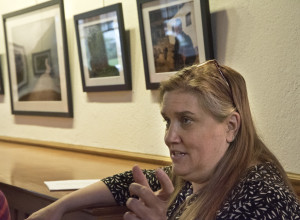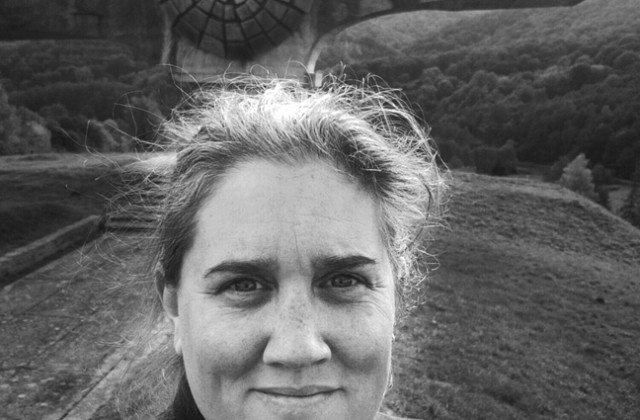The Ultimate Farm-to-Table Experience
Babs Perkins’s new photography on view at the library
By Lindsey Pizzica Rotolo
Babs Perkins describes a Zen-like element to life in the Balkans, which is certainly reflected in her photographs from the region. Her upcoming show at the Norfolk Library, “Bosnia & Serbia through the Lens” includes a collection of 30 photographs from her two trips in 2015.
Her first trip to the Balkans was back in 2012, when she spent four months travelling throughout former Yugoslavia, Bulgaria and Romania, taking over 10,000 photos. “I fell in love with the region and wanted to find a way to get back,” says Perkins. She describes a “DNA-level relationship to the culture,” as her grandfather was Slovak, and a compulsion to keep returning to the area because of the high level of instinctive familiarity she experienced while there.
After reading an article about cheeses going extinct in France (due in part to a decrease in the amount of land being farmed, extinction of “heritage” breeds, the knowledge base dying out and the European Union’s growing food safety regulations), Perkins started thinking about cheese in Bosnia and Serbia and was consumed by the thought that they could begin to disappear as well.

Barbara Perkins at the opening reception for her show at the Norfolk Library on May 1. Photo by Bruce Frisch.
With a renewed urge to document a way of life before it disappeared, including one of the last itinerant shepherd regions in the world, Perkins set out to photograph food producers in Bosnia and Serbia. Over the course of two visits, she spent four months in Bosnia and one and a half months in Serbia interviewing and photographing shepherds and a variety of cheese-making facilities, both large and small.
Perkins admits her fascination with the area probably goes all the way back to the 1984 Olympics in Sarajevo. “I remember having such curiosity about the 1984 Olympics in Sarajevo, and thinking, ‘What is this place?’ So foreign, yet so like us.” Then, when the civil war broke out in the early 1990’s, Perkins’s interest in the area was rekindled. “It was so shocking that could happen in a civilized area.”
On her recent trips to the Balkans, Perkins began by visiting green markets and asking a lot of questions. She explains that there is always suspicion at the start of her attempts at interviews, but eventually everyone wants their picture taken, so it doesn’t take long for her subjects to warm to her.
Perkins understands about 30 percent of the language, and travels with an interpreter, usually a student. One of the things she loves about the region is that the cities are sophisticated, but then you travel 20 minutes outside the city limits and it’s like walking back in time. Some villages have no running water or electricity, so the people there are making cheese, olive oil and brandy the same way their ancestors did.
Perkins recounts one subject of a photograph, Rezlića, a 93-year-old woman whom Perkins first observed carrying five-liter pails of goat milk. She soon found out that Rezlića, dressed in black, mourning the death of her son-in-law, lives within 100 yards of four generations of her family, and had been making cheese since she was a little girl.
As a result of its excellent water quality and clean, undammed rivers, Bosnia has world-class fishing and adventure sports. It is also quite safe. Perkins has never feared for her personal safety or worried about her equipment being stolen. “Hospitality is so important to their culture. It’s such a generous place and there’s a simple understanding that we’re all in it together.”
Not to say they don’t complain, but Bosnians are jokers—one of the many things Perkins loves about their culture. There is a lot of self-deprecation, and the population has a sort of resignation as the result of the perennially high unemployment and corruption. And, of course, the fact that many were refugees just 20 years ago.
“Bosnia is improvisation,” one woman said to Perkins. So what better place for cheese making, and photography.
An opening reception for “Bosnia and Serbia through the Lens” will take place at the Norfolk Library on Sunday, May 1 from 4 to 6 p.m. A slide show and conversation with the artist will follow on Saturday, May 7 at 4 p.m.

